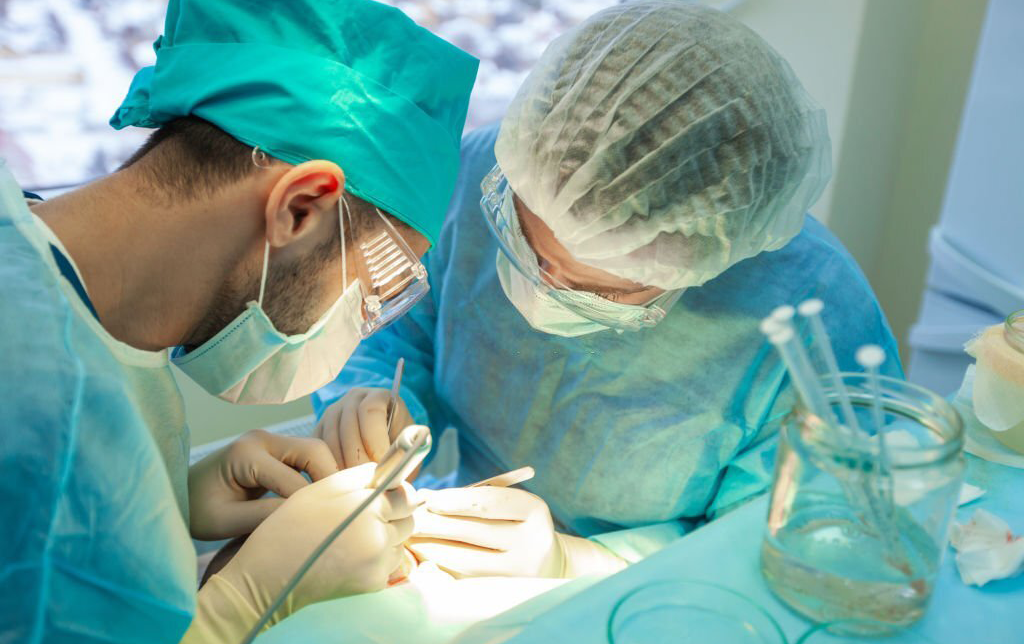Blogs

Understanding Genital Surgery: Types, Procedures, and Considerations
Genital surgery encompasses a range of surgical procedures aimed at addressing congenital anomalies, anatomical abnormalities, and personal or aesthetic transformations of the genitalia. This type of surgery can be performed on individuals of all ages, from infants to adults, and is designed to improve both function and appearance. This comprehensive guide explores the different types of genital surgeries, their indications, procedural details, recovery processes, and the ethical considerations involved.
Types of Genital Surgery
- Congenital Anomalies
Genital surgery often addresses congenital anomalies—conditions present at birth that affect the normal development of the genitalia:
– Hypospadias: In male infants, hypospadias is a condition where the urethral opening is located on the underside of the penis rather than at the tip. Surgery is performed to reposition the urethral opening and correct any associated penile curvature.
– Epispadias: This rare defect involves the urethral opening being located on the upper aspect of the penis in males or in the region of the clitoris in females. Surgical correction aims to reposition the urethral opening and reconstruct the affected structures.
– Ambiguous Genitalia: This condition is characterized by external genitalia that do not clearly appear male or female. Surgery may be performed to create genitalia that aligns with the child’s chromosomal sex or chosen gender identity.
- Anatomical Abnormalities
Genital surgery also addresses anatomical abnormalities that arise from injury, disease, or medical treatments:
– Pelvic Organ Prolapse: This occurs when one or more pelvic organs (bladder, uterus, or rectum) descend into or outside of the vaginal canal due to weakened support structures. Surgery aims to restore normal anatomy and support the pelvic organs.
– Vaginal Agenesis: A condition where the vagina is absent or underdeveloped, often associated with Mayer-Rokitansky-Küster-Hauser (MRKH) syndrome. Surgery is performed to create a functional vaginal canal.
– Trauma and Injury: Injuries to the genital area from accidents, sexual assault, or childbirth may require surgery to repair damaged tissues and restore normal function.
- Transformative Surgeries
Transformative surgeries alter the genitalia to align with a person’s gender identity or aesthetic preferences:
– Gender-Affirming Surgeries: Part of gender transition for transgender individuals, these surgeries may include vaginoplasty (creation of a neovagina for transgender women) and phalloplasty (creation of a neophallus for transgender men).
– Cosmetic Genital Surgery: Procedures aimed at enhancing the appearance of the genitalia for personal or aesthetic reasons, such as labiaplasty (reshaping the labia) and penile augmentation (increasing the size of the penis).
Indications for Genital Surgery
Medical Indications
– Functional Impairment: Conditions that impair normal genital function, such as difficulties with urination, sexual function, or hygiene, may necessitate surgery.
– Pain and Discomfort: Persistent pain or discomfort due to congenital anomalies, anatomical abnormalities, or previous surgeries can be alleviated through surgical intervention.
– Psychological Distress: The psychological impact of having atypical or damaged genitalia can be significant. Surgery can help alleviate distress and improve mental well-being.
Personal and Aesthetic Indications
– Gender Dysphoria: For transgender individuals, incongruence between gender identity and physical genitalia can cause distress. Gender-affirming surgeries are crucial in aligning physical appearance with gender identity.
– Aesthetic Preferences: Some individuals seek surgery to enhance the appearance of their genitalia to meet personal or cultural standards of beauty and improve self-esteem.
The Surgical Procedures
Preoperative Evaluation
Before undergoing genital surgery, patients undergo a comprehensive evaluation:
– Medical History and Physical Examination: Assessment of overall health, existing conditions, and specific anatomy of the genitalia.
– Imaging Studies: Ultrasound, MRI, or CT scans may be used to obtain detailed images of the genital structures.
– Psychological Assessment: Particularly for transformative surgeries, a psychological assessment ensures the patient is mentally and emotionally prepared.
Surgical Techniques
– Anesthesia: Depending on the procedure, local, regional, or general anesthesia is administered for patient comfort.
– Incision and Exposure: Precise incisions are made to access affected areas, aiming to minimize scarring and preserve healthy tissue.
– Tissue Manipulation: This involves removing, reshaping, or grafting tissue to achieve the desired anatomical correction or transformation. Techniques include flap reconstruction, tissue expansion, and grafting.
– Suturing and Closure: The surgical site is sutured meticulously to promote healing. Dissolvable sutures are often used to minimize the need for removal.
– Postoperative Care: Detailed care instructions are provided, including wound care, pain management, and activity restrictions.
Recovery and Aftercare
Recovery varies based on the procedure’s complexity:
– Rest and Activity Restrictions: Patients should avoid strenuous activities, sexual intercourse, and heavy lifting as advised.
– Hygiene: Proper hygiene is crucial to prevent infection.
– Pain Management: Pain and discomfort are managed with prescribed medications.
– Follow-Up Appointments: Regular check-ups are necessary to monitor healing and address concerns.
– Physical Therapy: In some cases, physical therapy may be recommended to support recovery.
Potential Risks and Complications
– Infection: Although preventive measures are taken, infection remains a risk.
– Bleeding: Excessive bleeding, while rare, can occur.
– Scarring: Some degree of scarring is inevitable despite efforts to minimize it.
– Pain and Discomfort: Persistent or severe pain should be reported.
– Functional Issues: Rare complications may include issues with urinary function or dissatisfaction with results.
– Psychological Impact: Surgery’s psychological impact can be significant, and ongoing support may be necessary.
Ethical and Psychological Considerations
Informed Consent
Informed consent is crucial. Patients must understand the procedure, risks, and expected outcomes. Surgeons have a responsibility to ensure patients make well-informed decisions.
Psychological Support
Given the significant psychological implications, realistic expectations are important. Counseling or therapy can help address emotional issues and ensure the decision to undergo surgery is well-considered.
Cultural and Societal Influences
Cultural and societal norms can influence the decision to pursue surgery. Patients should reflect on their motivations to ensure decisions are based on personal desire rather than external pressures. Surgeons should support patients in making choices that align with their personal values and needs.
Genital surgery is a multifaceted field addressing a wide range of conditions and needs. Whether correcting congenital anomalies, addressing anatomical abnormalities, or fulfilling personal or aesthetic goals, these surgeries require careful consideration and a comprehensive approach. At Saundarya City, we are committed to providing expert care and support throughout the surgical journey, ensuring optimal outcomes and enhanced quality of life for our patients.
Popular Posts

Nose Surgery (Rhinoplasty)
Nose reshaping (rhinoplasty or a "nose job") is an operation to change the shape or size of the nose...

Best Hair Transplant Doctor In Nagpur Location
Saundarya City Uses Modern techniques have enabled advanced methods for surgical hair transplants that can help restore lost hair...



 Book an Appointment
Book an Appointment